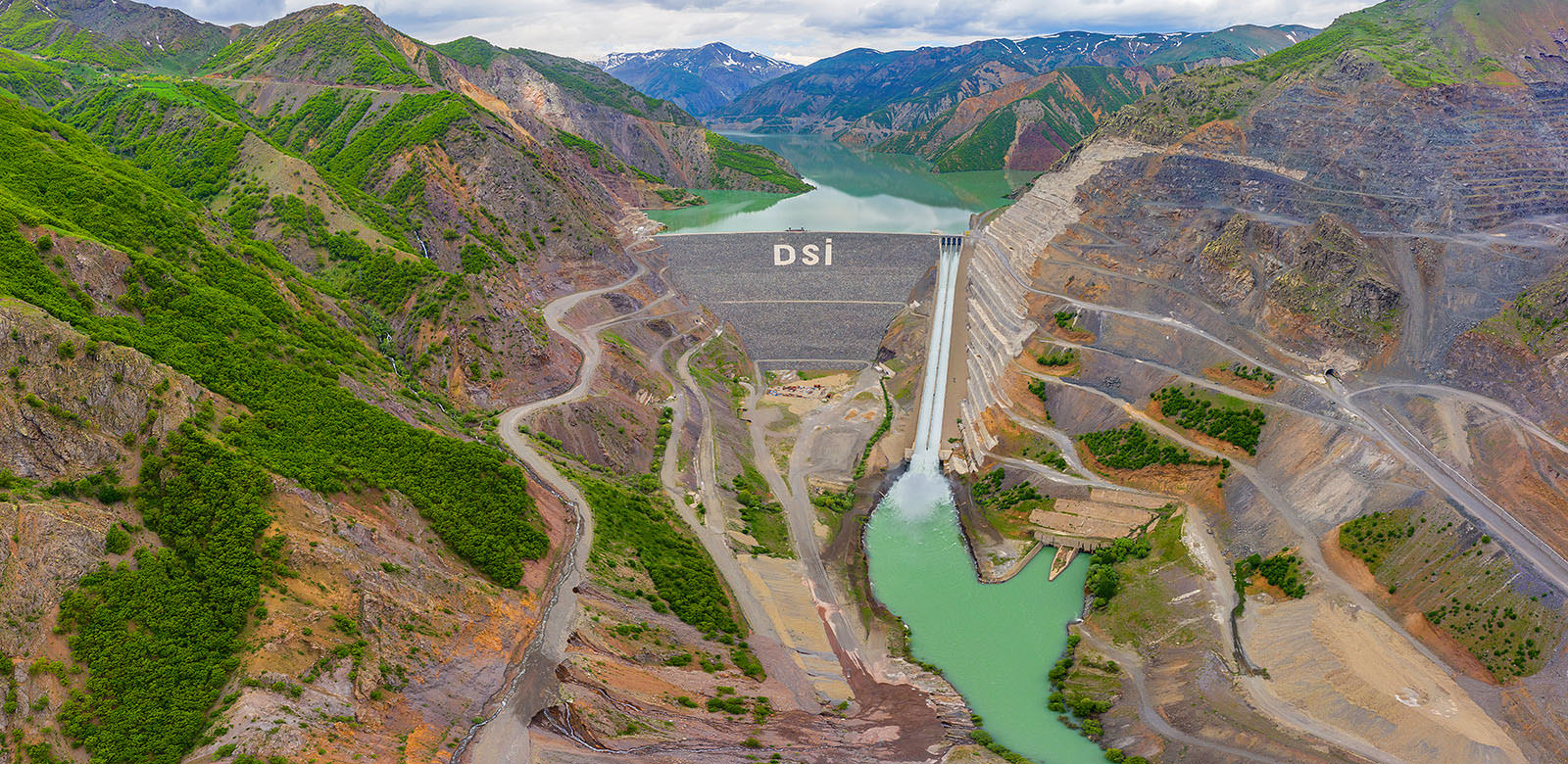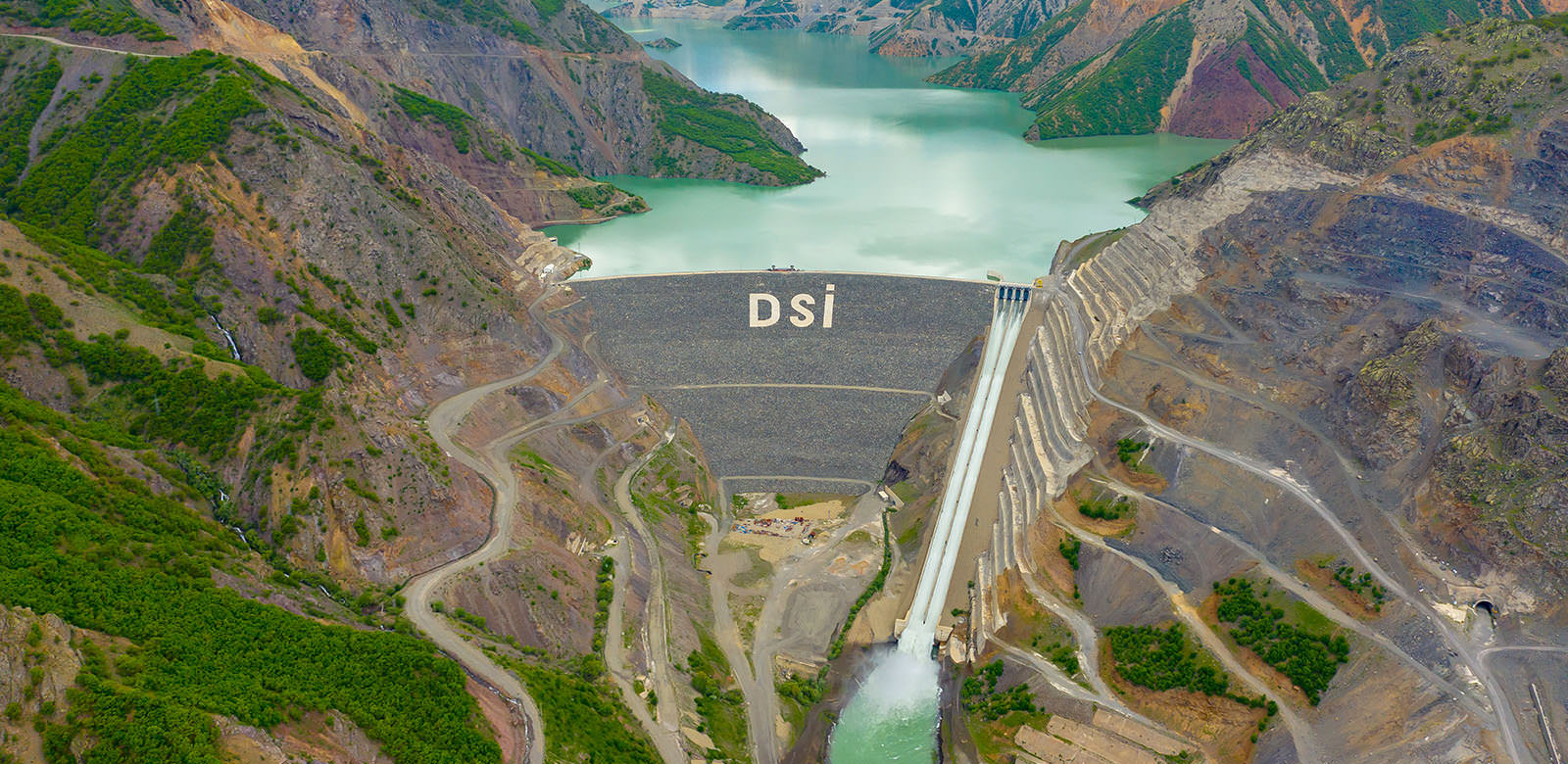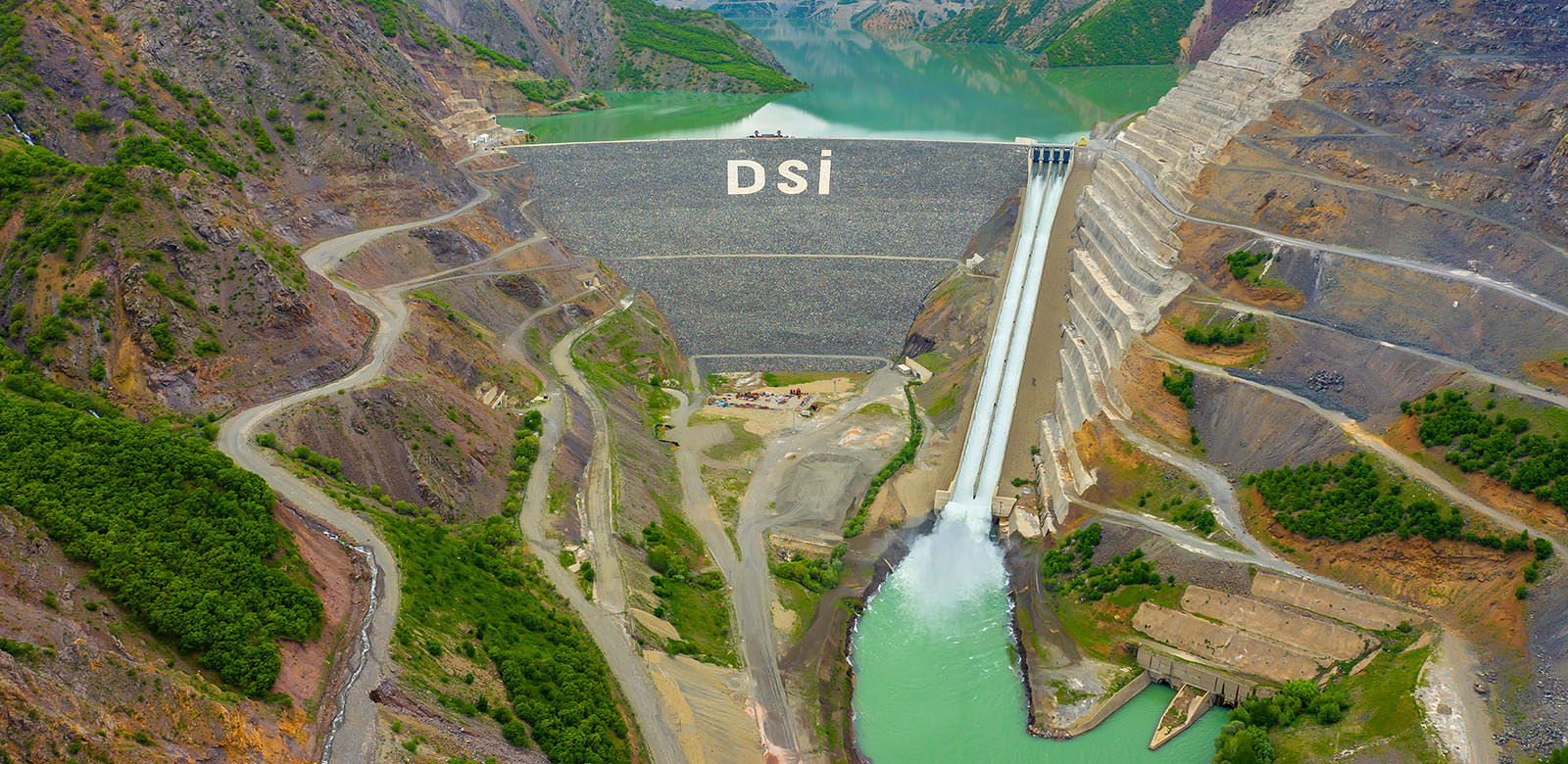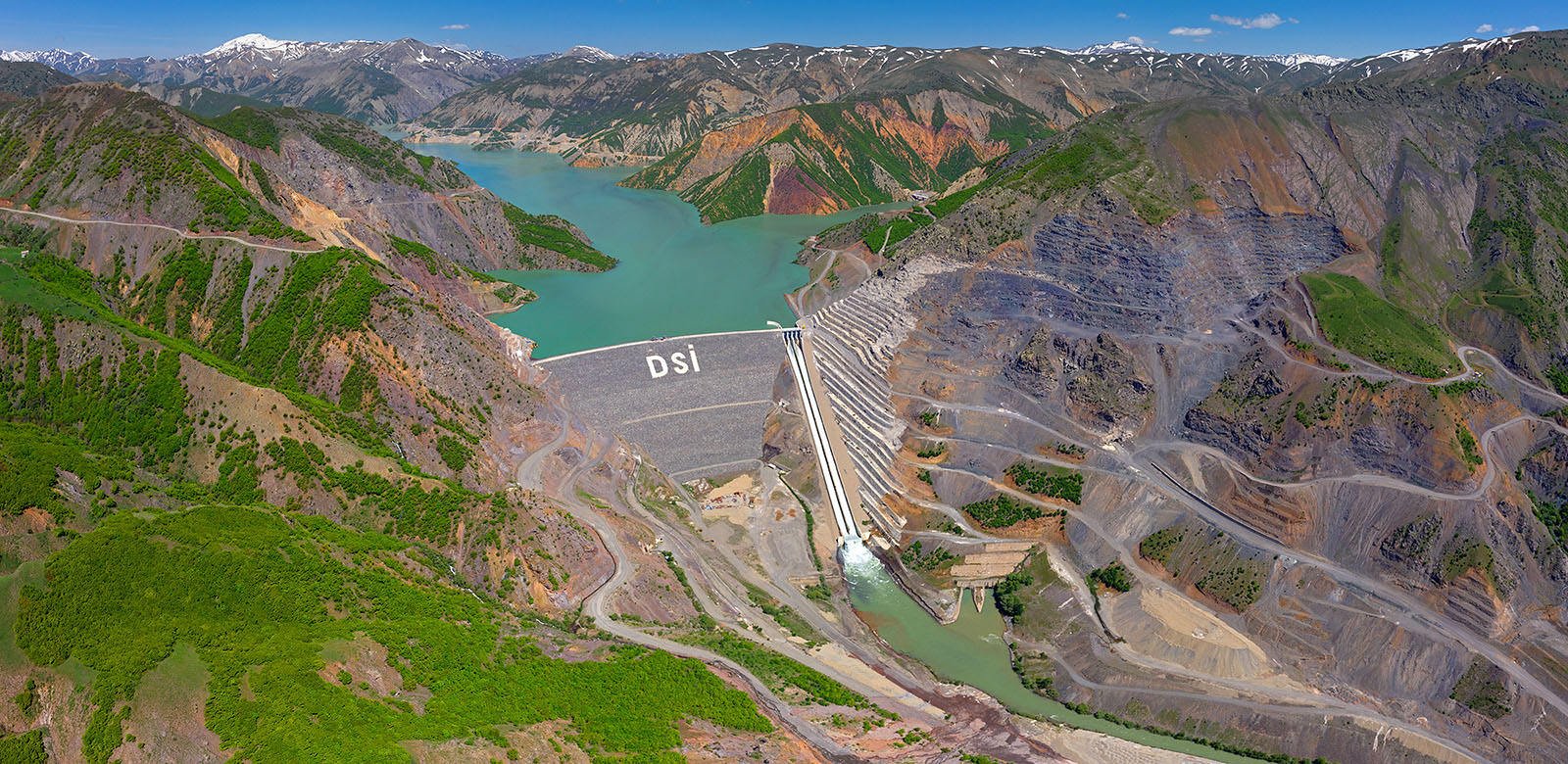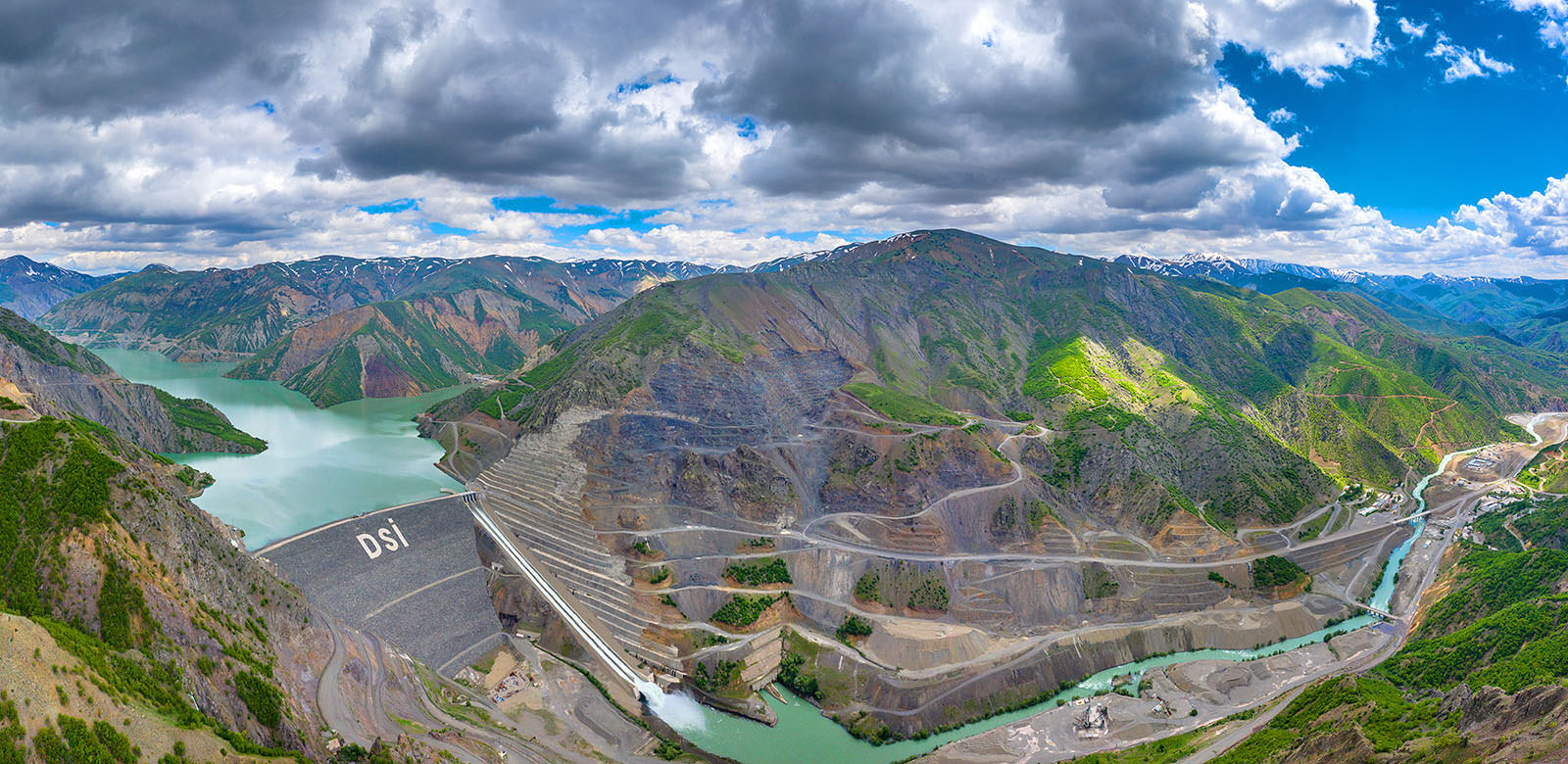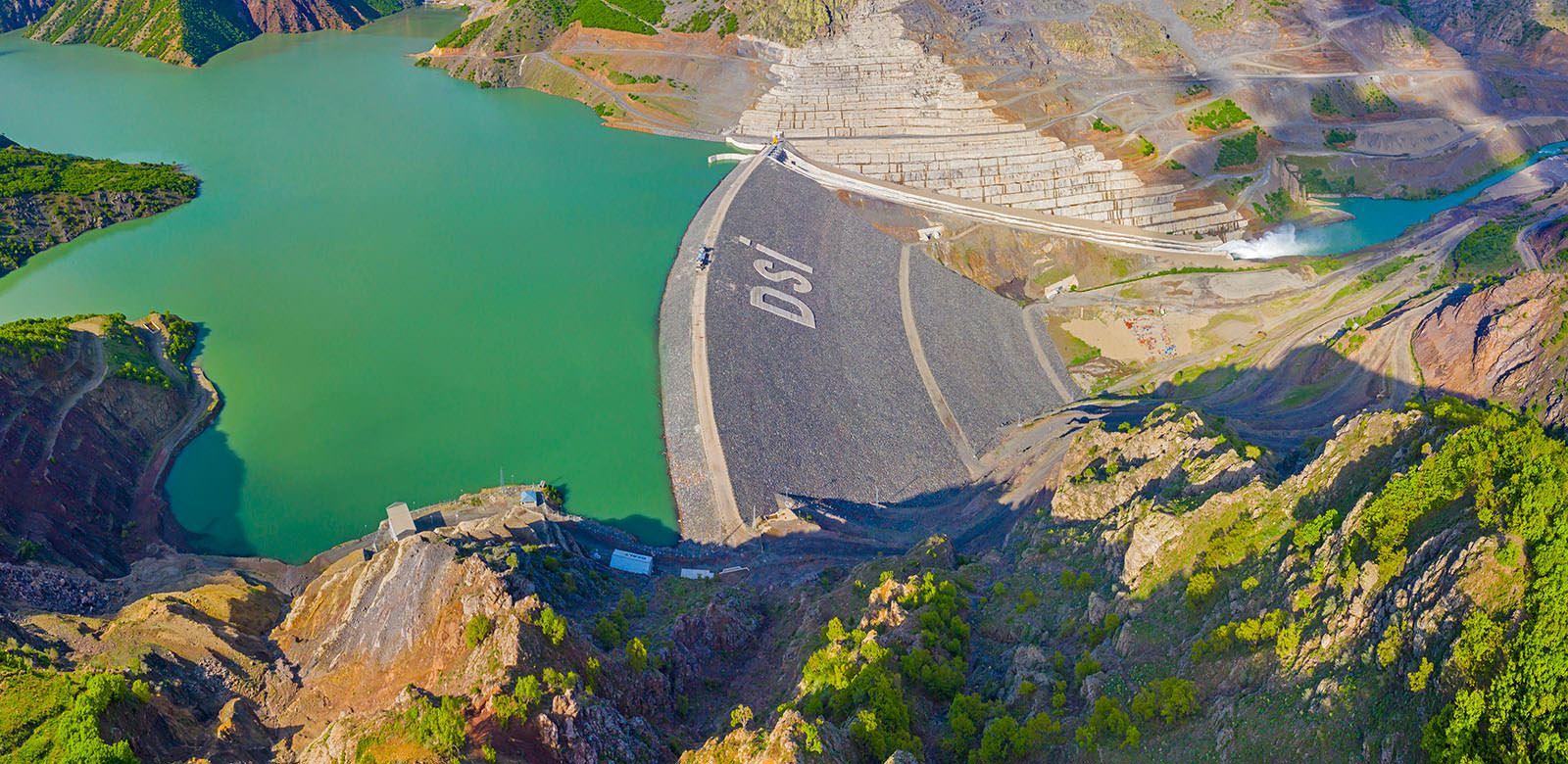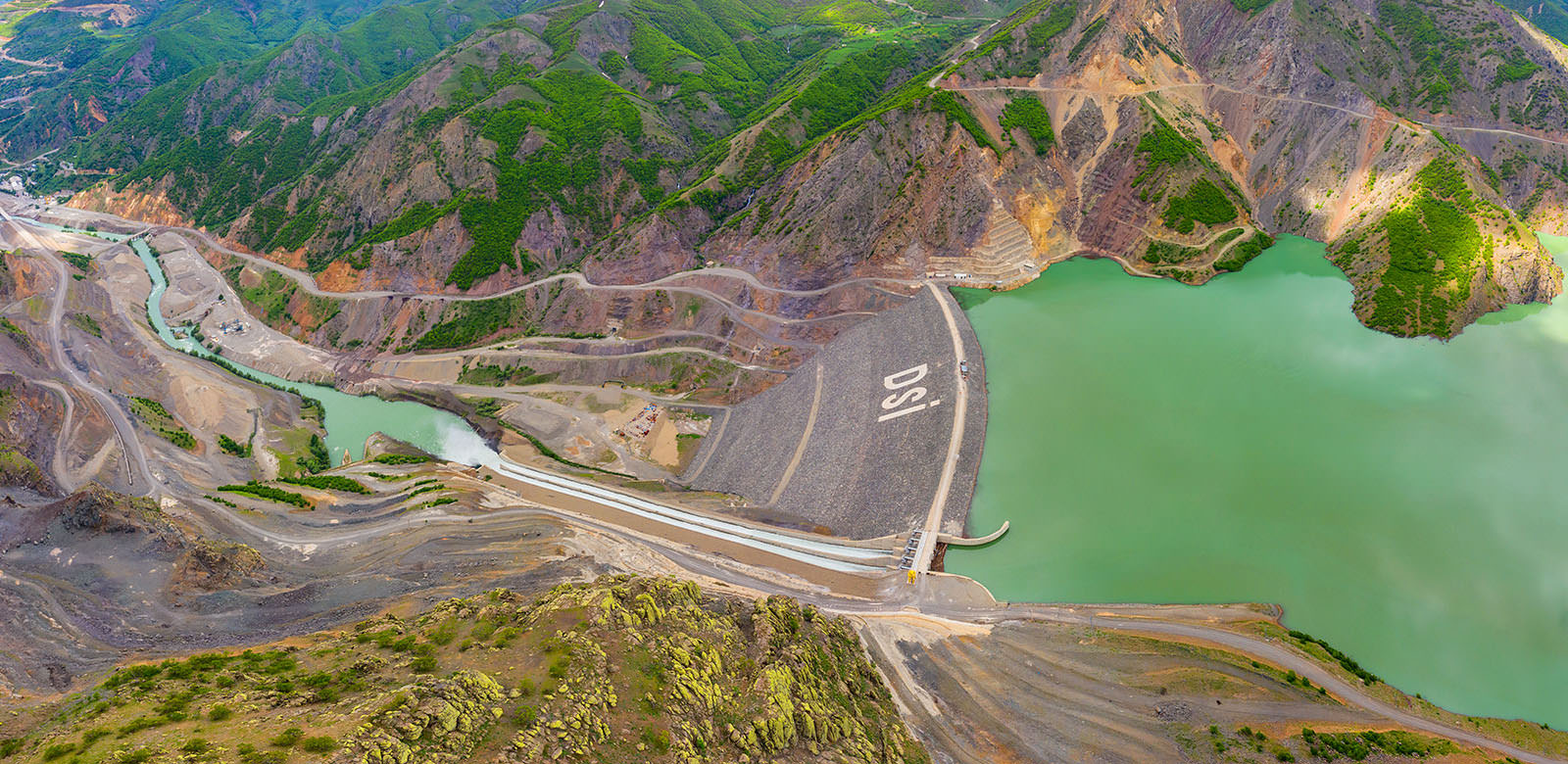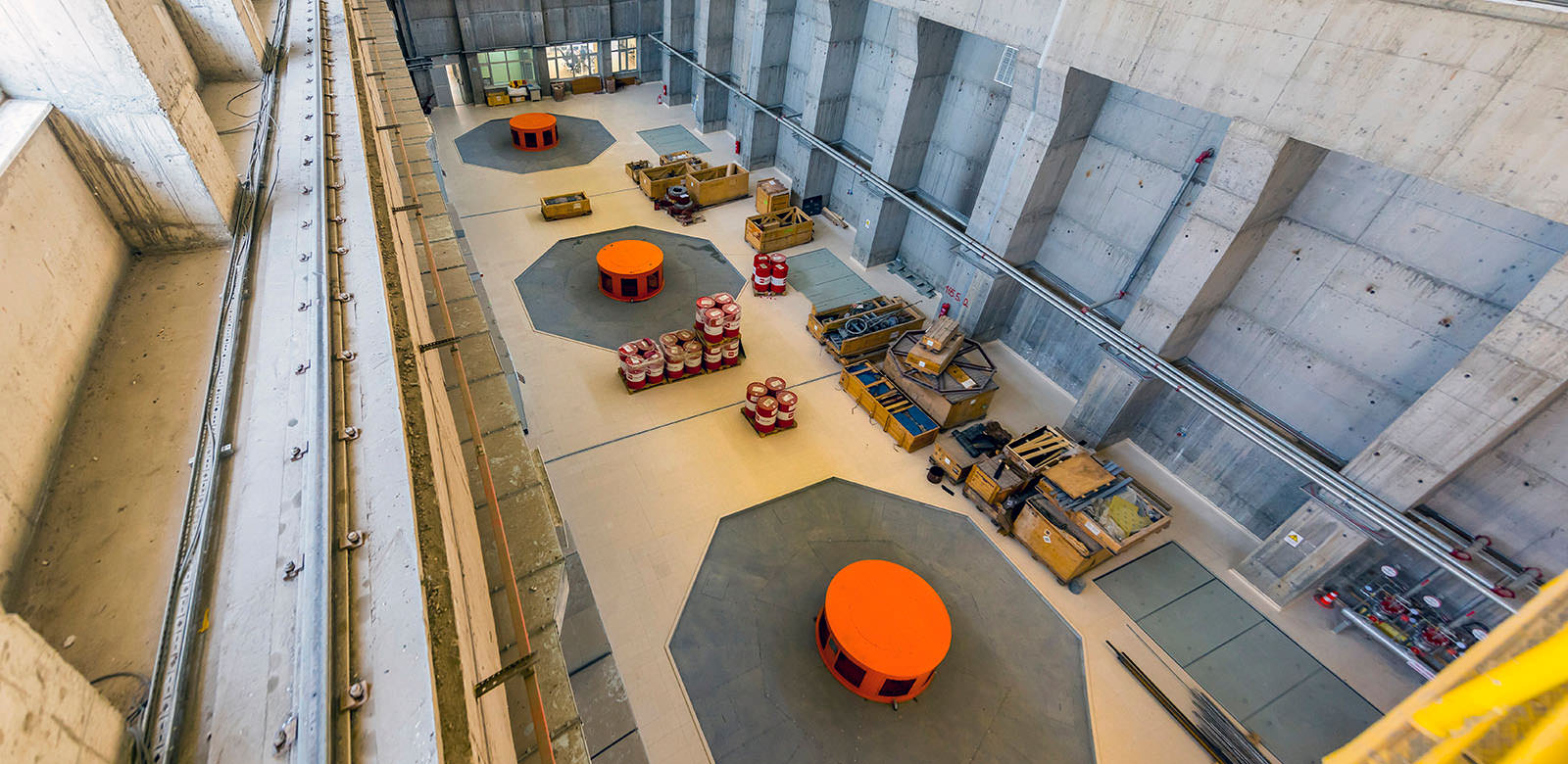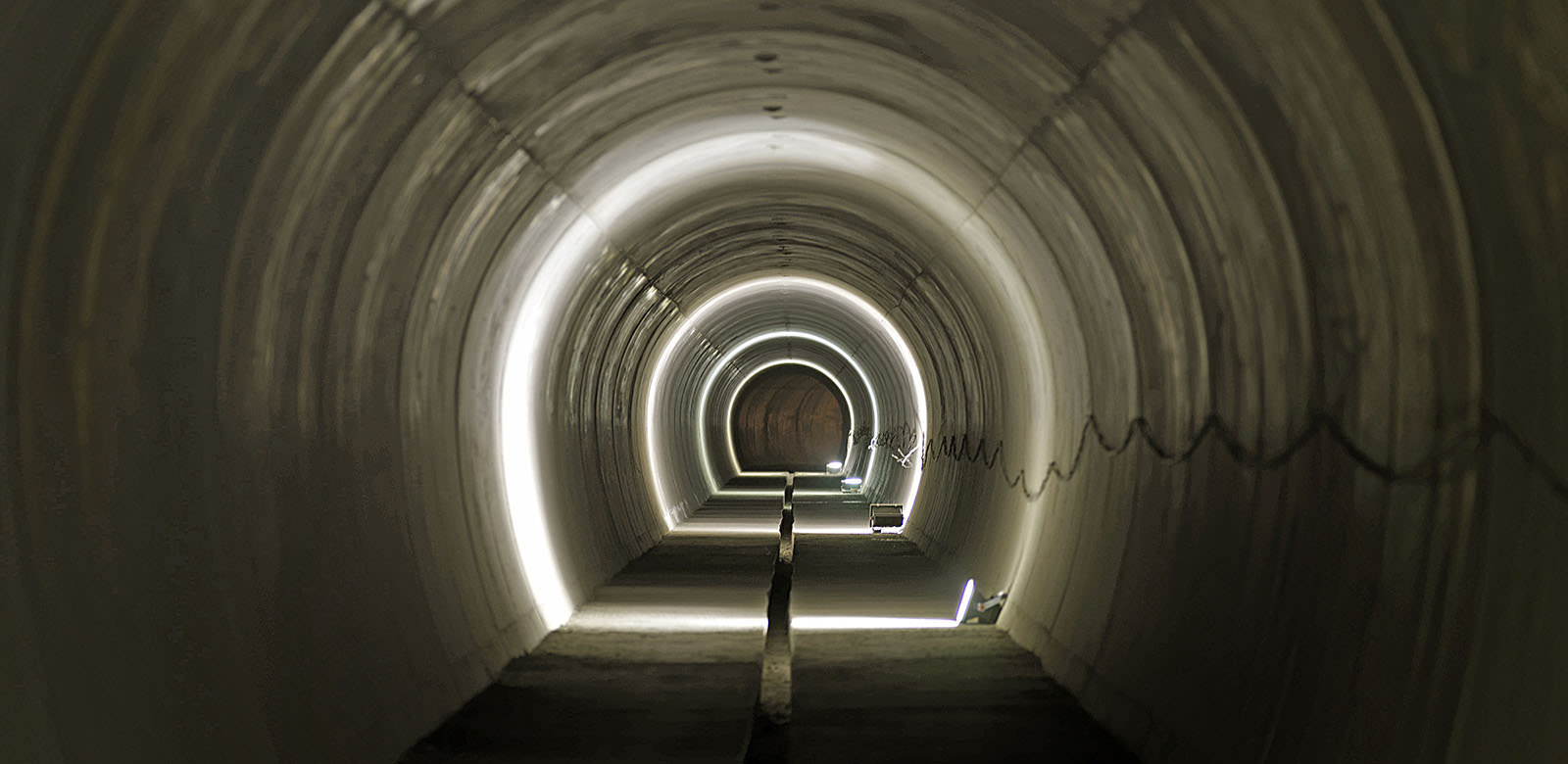Kiğı Dam and HEPP
The Kiğı hydropower project (HPP) was designed to harness the power of Peri River in highland of Bingöl province of eastern Türkiye, using a hydraulic gross head of 218 meters by virtue of its water storage dam, and its associated headrace tunnel.
The main structure of the project is a 23,000,000 m3 central clay-core rock-fill embankment dam, which is 147-meter tall from the stream bed and has a crest length of 585 meters. It is impounding a reservoir with a capacity of 570 million cubic meters of water. The radial-gated spillway has a capacity of 4,500 m3/s and is located on an excavated ground at the left abutment. Two (2) concrete-lined tunnels, 1,385 meters and 1,278 meters in length and with an internal diameter of 5 meters respectively were built for the river diversion flow. In addition, and as part of the project scope, a horizontal head race tunnel measuring 8,135 meters and having a diameter of 5.5 meters along with a concrete lined, 112-meter tall vertical cylindrical surge tank with an internal diameter of 10 meters, and a 100 meter-tall concrete-lined pressure shaft with an internal diameter of 5 meters were built to create a high head for the available hydraulic energy. This is achieved by transferring water flow through a head race tunnel system from a concrete-lined, 76-meter tall vertical intake shaft located in the dam that has an 11.40 by 9.5 meters rectangular cross section, into a semi-underground powerhouse, located at the base of the escarpment, and which is equipped with three (3) Francis turbine-generator units with a total installed capacity of 180 MW.
Construction of the Kiğı Dam and HEPP was launched in 2010. The dam was impounded in 2015 and fully commissioned in 2017

